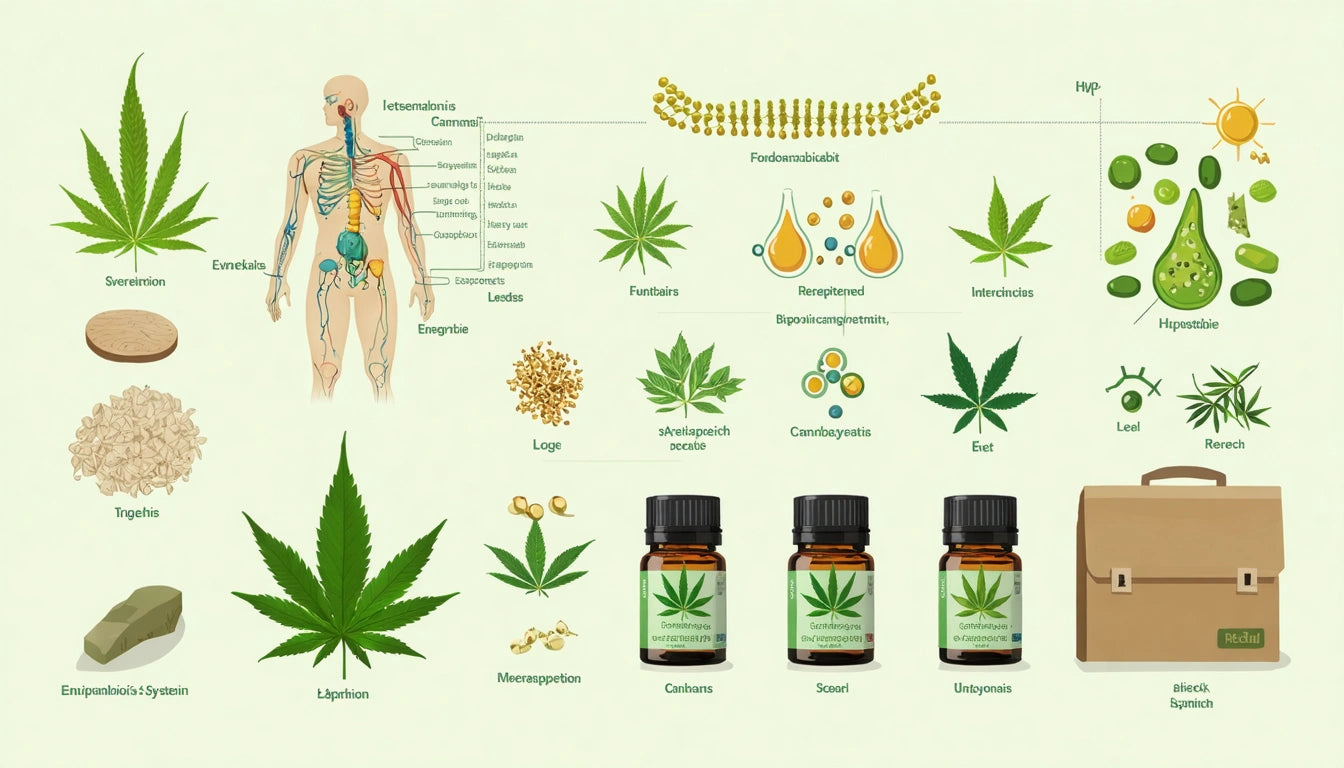Table of Contents
- What is the Endocannabinoid System?
- Key Components of the Endocannabinoid System
- Endocannabinoid Receptors: CB1 and CB2
- Endogenous Cannabinoids: The Body's Natural Compounds
- Metabolic Enzymes: Regulation and Breakdown
- Functions and Regulation of the Endocannabinoid System
- How Cannabis Interacts with the Endocannabinoid System
- Therapeutic Applications and Future Research Directions
Understanding the Endocannabinoid System: A Comprehensive Overview
The endocannabinoid system (ECS) represents one of the most important physiological systems involved in establishing and maintaining human health. Despite its critical role in homeostasis, the ECS was only discovered in the early 1990s during research into how THC affects the body. Since then, our understanding of this complex cell-signaling system has expanded dramatically, revealing its influence on multiple bodily functions.
What is the Endocannabinoid System?
The endocannabinoid system is a complex cell-signaling network that plays a crucial role in regulating a range of functions and processes in our bodies. As detailed in our comprehensive guide on endocannabinoids, this system helps maintain biological harmony in response to changes in the environment.
The name "endocannabinoid" comes from "endogenous cannabinoids" - cannabinoids produced naturally within the body. This system was named after the cannabis plant because research into cannabis compounds led to its discovery.
Key Components of the Endocannabinoid System
The ECS consists of three core components:
- Endocannabinoid receptors found throughout the body
- Endocannabinoids (endogenous cannabinoids)
- Enzymes responsible for breaking down endocannabinoids
These components work together to help regulate numerous physiological and cognitive processes including mood, memory, appetite, pain sensation, and immune function.
Endocannabinoid Receptors: CB1 and CB2
Endocannabinoid receptors are found throughout your body. Endocannabinoids bind to them to signal that the ECS needs to take action. The two main receptors are:
CB1 Receptors
CB1 receptors are primarily found in the central nervous system, particularly in the brain. They're concentrated in regions associated with the behaviors they influence, including:
- Cerebral cortex (cognition)
- Hippocampus (memory)
- Basal ganglia (movement)
- Hypothalamus (appetite)
CB2 Receptors
CB2 receptors are mainly found in the peripheral nervous system, especially immune cells. Their distribution suggests they play a role in immune function and inflammation response. Understanding cannabinoid receptors is crucial for grasping how the ECS functions.
Endocannabinoid receptors allow for targeted responses. The same endocannabinoids might bind to CB1 receptors in spinal nerves to relieve pain or to CB2 receptors in immune cells to reduce inflammation.
Endogenous Cannabinoids: The Body's Natural Compounds
Endocannabinoids are molecules produced naturally by your body. They're similar to cannabinoids found in the cannabis plant but are manufactured internally. The two key endocannabinoids identified so far are:
- Anandamide (AEA): Often called the "bliss molecule," it plays a role in regulating mood, appetite, and pain perception
- 2-arachidonoylglycerol (2-AG): Present at higher concentrations in the brain, it's involved in emotion regulation, pain sensation, and appetite
Unlike many other biological molecules, endocannabinoids are produced on-demand rather than stored for later use. They're synthesized when and where they're needed, making the system highly responsive to changing conditions.
Metabolic Enzymes: Regulation and Breakdown
The third component of the ECS involves enzymes that break down endocannabinoids after they've carried out their function. The two main enzymes are:
- Fatty acid amide hydrolase (FAAH): Breaks down anandamide
- Monoacylglycerol lipase (MAGL): Breaks down 2-AG
These enzymes ensure that endocannabinoids are used when needed but not for longer than necessary, which helps maintain homeostatic balance. Our specialized equipment for cannabis product preparation allows processors to maintain precise control during formulation, which is essential when creating products designed to interact with these sensitive enzymatic systems.
Functions and Regulation of the Endocannabinoid System
The endocannabinoid system is involved in regulating a variety of physiological and cognitive processes including:
- Mood and stress regulation
- Learning and memory
- Appetite and digestion
- Metabolism and energy balance
- Immune system function
- Inflammatory responses
- Sleep cycles
- Reproductive system function
- Pain sensation
- Motor control
The primary role of the ECS is to maintain homeostasis, the stable internal environment necessary for survival regardless of external conditions. When an imbalance is detected, the ECS activates to help return the specific function back to its biological sweet spot.
How Cannabis Interacts with the Endocannabinoid System
Cannabis contains over 100 cannabinoids that can interact with the ECS. The two most well-known are:
THC (Tetrahydrocannabinol)
THC binds directly to both CB1 and CB2 receptors, but has a stronger affinity for CB1. This binding explains its psychoactive effects and other physiological impacts. As explained in our guide to cannabinoids, THC can produce a range of effects from euphoria to anxiety depending on dosage and individual factors.
CBD (Cannabidiol)
CBD interacts with the ECS in a more complex way. Rather than binding directly to receptors, it works indirectly by inhibiting the FAAH enzyme that breaks down anandamide, allowing this endocannabinoid to have a more prolonged effect. CBD may also bind to receptors not yet discovered or interact with non-cannabinoid receptors.
In some cases, excessive cannabis use can disrupt normal endocannabinoid function, potentially leading to conditions like cannabinoid hyperemesis syndrome, characterized by cyclic vomiting and abdominal pain.
Therapeutic Applications and Future Research Directions
The discovery of the endocannabinoid system has opened new avenues for therapeutic interventions. Researchers are exploring how modulating the ECS might help treat various conditions:
- Chronic pain management
- Neurodegenerative disorders like Alzheimer's and Parkinson's
- Mood disorders including anxiety and depression
- Metabolic syndrome and obesity
- Autoimmune conditions
- Cancer (particularly for symptom management)
Research continues to uncover new endocannabinoids, receptors, and potential therapeutic targets within this system. The term "endo weed" sometimes appears in discussions about the body's natural cannabinoid production, highlighting the growing integration of scientific understanding with cannabis culture terminology.
As our understanding of the endocannabinoid system expands, so too does the potential for developing targeted therapies that can address specific imbalances with fewer side effects than conventional medications. The next decade promises significant advances in both our fundamental knowledge of this remarkable system and its clinical applications.











Leave a comment
All comments are moderated before being published.
This site is protected by hCaptcha and the hCaptcha Privacy Policy and Terms of Service apply.